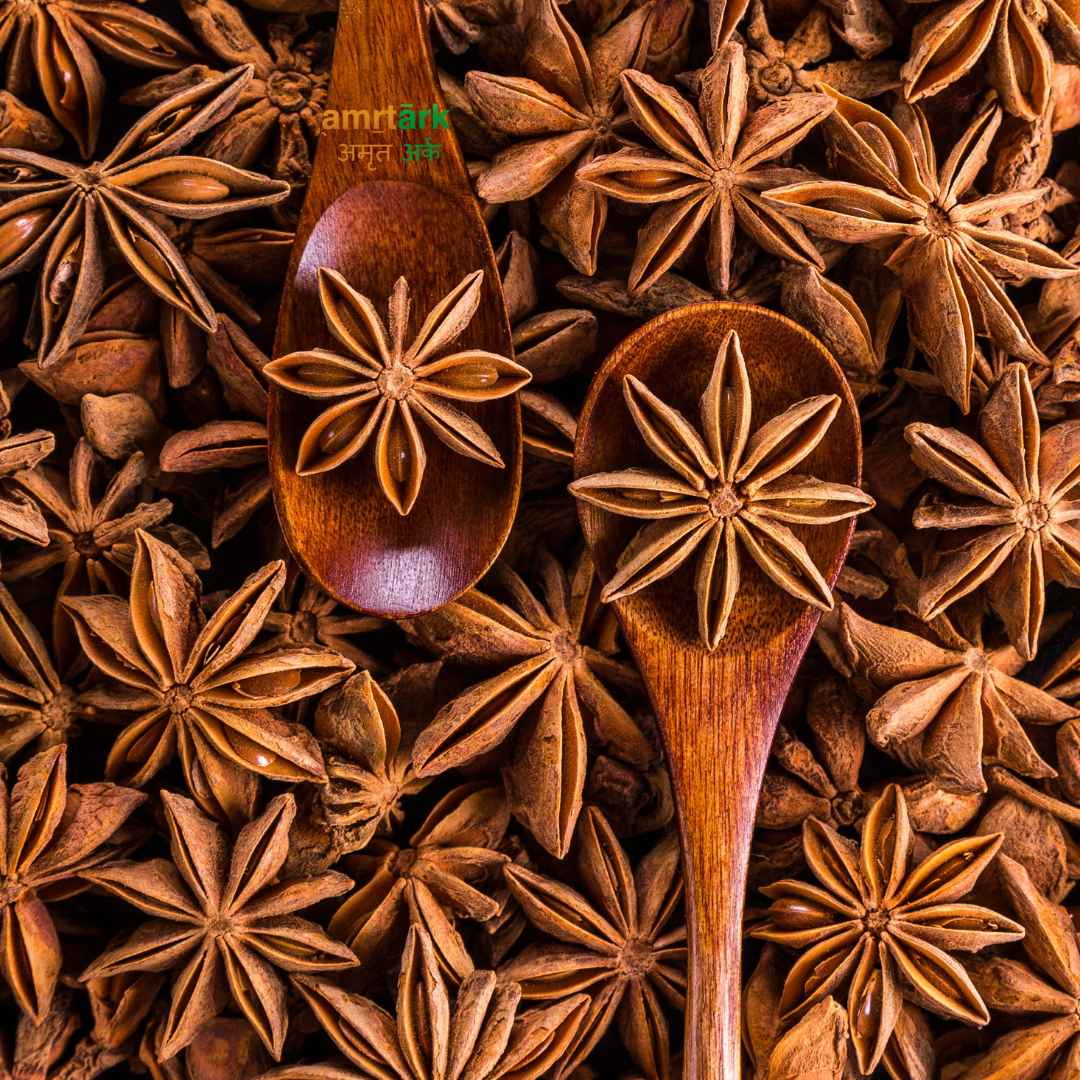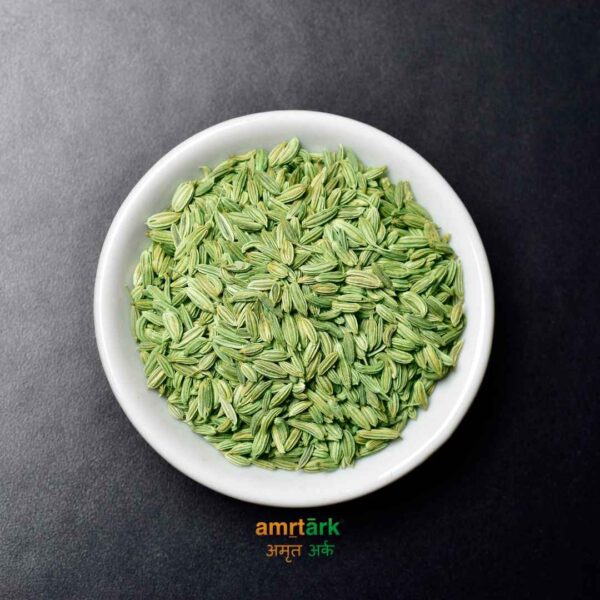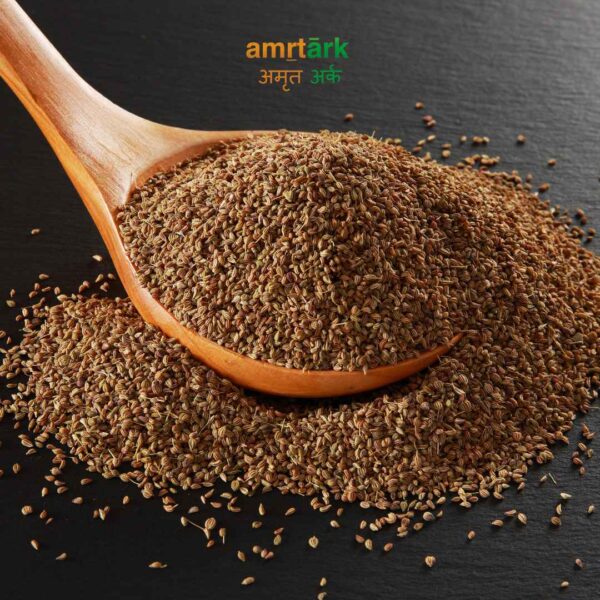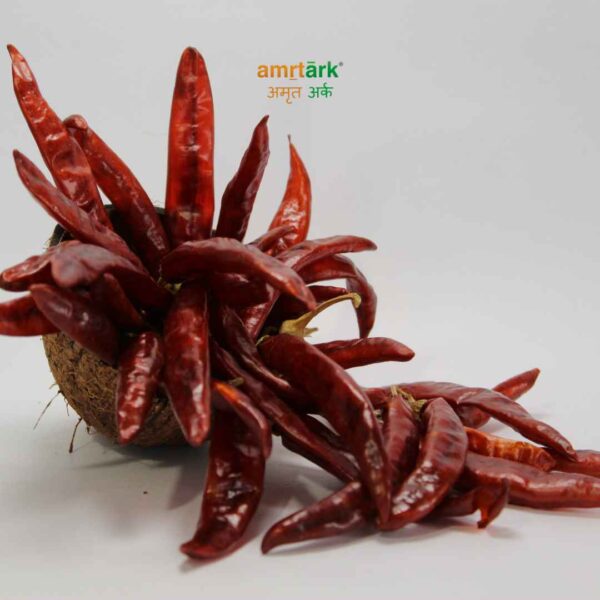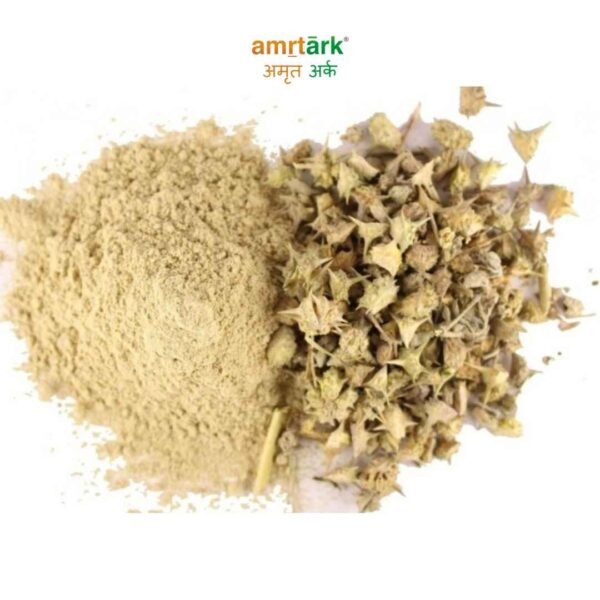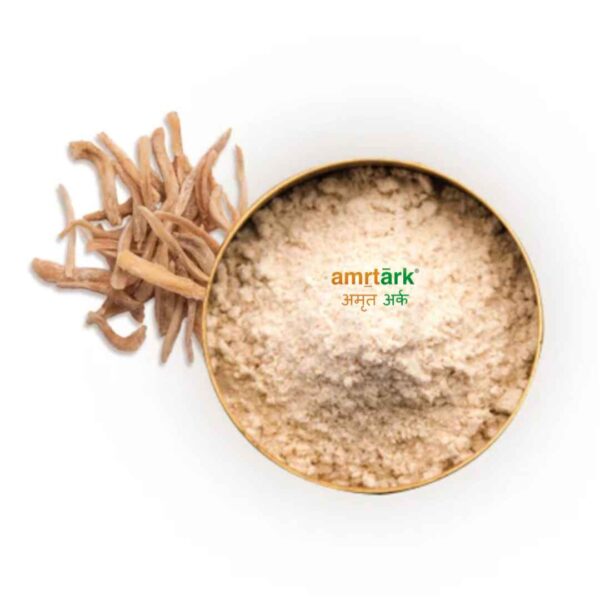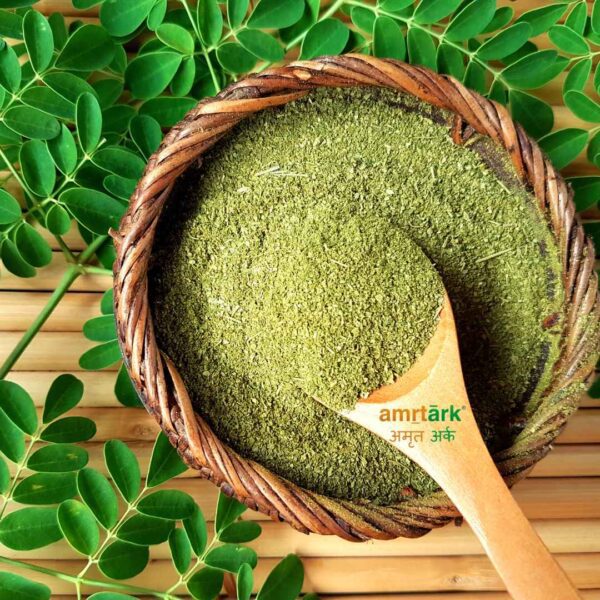Description
Star Anise (Illicium verum) – Badiyan Ka Phool
Star Anise, scientifically known as Illicium verum, is a star-shaped spice that is native to southern China and northern Vietnam. Known for its unique appearance and licorice-like flavor, Star Anise is widely used in Asian cuisine, particularly in Chinese, Indian, and Southeast Asian cooking. It is also an important ingredient in traditional medicine, especially in Ayurveda and Traditional Chinese Medicine (TCM).
Botanical Characteristics
- Common Names: Star Anise, Badiyan Ka Phool (Hindi), Chinese Star Anise
- Scientific Name: Illicium verum
- Family: Schisandraceae
- Appearance: The fruit of the Star Anise tree is a star-shaped pod with 6 to 8 pointed segments, each containing a single glossy, brown seed. The pods are harvested before they ripen and are sun-dried, resulting in their characteristic deep brown color and woody texture.
Flavor Profile
Star Anise has a strong, sweet, and licorice-like flavor, similar to aniseed or fennel, but with more intensity. It adds a warm, sweet-spicy note to dishes and is commonly used in both savory and sweet preparations. Despite its similarity in flavor to anise, the two come from different plant families.
Culinary Uses of Star Anise
Star Anise is a versatile spice that is used in both whole and ground forms in various cuisines:
- Chinese Cuisine: A key component in Chinese Five Spice Powder, Star Anise is used to flavor meat dishes like roast duck, braised pork, and beef stew. It’s commonly added to soups, broths, and marinades, including the famous Peking Duck and Pho (Vietnamese soup).
- Indian Cuisine: In India, Star Anise is used in rich gravies, biryanis, and masala chai. It pairs well with other warming spices like cinnamon, cardamom, and cloves, making it a popular addition to garam masala and spice blends for curries.
- Baking and Desserts: In Western cuisine, Star Anise is often used in baking, especially in cakes, cookies, and fruit desserts. Its sweet, aromatic flavor complements ingredients like apples, pears, and chocolate.
- Beverages: Star Anise is used in mulled wines, herbal teas, and spiced liqueurs. In Southeast Asia, it is often brewed with black tea to make a fragrant beverage.
- Pickling and Preserving: It is also used in pickling brines for its complex flavor and in spiced jams and chutneys.
Health Benefits of Star Anise (Illicium verum)
Star Anise has been valued for centuries not only for its culinary uses but also for its medicinal properties. It contains a variety of bioactive compounds, including anethole, shikimic acid, and flavonoids, which offer multiple health benefits:
- Antiviral and Antimicrobial Properties: One of the most significant compounds found in Star Anise is shikimic acid, which is a precursor in the production of oseltamivir (Tamiflu), an antiviral drug used to treat influenza. Star Anise is widely used in traditional medicine for its ability to combat viral infections like the flu, as well as bacterial and fungal infections.
- Rich in Antioxidants: Star Anise is loaded with antioxidants that help neutralize free radicals in the body, reducing oxidative stress and inflammation. This contributes to the prevention of chronic diseases like heart disease and cancer.
- Improves Digestion: Star Anise has carminative properties, meaning it helps reduce gas and bloating, making it beneficial for digestive health. It is often used in herbal remedies to treat indigestion, nausea, and stomach cramps.
- Promotes Respiratory Health: Traditionally, Star Anise has been used to treat respiratory conditions like coughs, bronchitis, and asthma. Its expectorant properties help in clearing mucus from the lungs, and its antimicrobial effects help fight respiratory infections.
- Boosts Immunity: The high levels of antioxidants and polyphenols in Star Anise strengthen the immune system by fighting off harmful pathogens. Regular consumption may help reduce the risk of infections and promote overall well-being.
- Supports Hormonal Balance: Star Anise is known to have phytoestrogenic properties, meaning it contains plant-based compounds that mimic the effects of estrogen. This can be beneficial for women experiencing hormonal imbalances, especially during menopause.
- Anti-inflammatory Properties: The anti-inflammatory effects of Star Anise help in reducing inflammation in the body, making it useful in treating conditions like arthritis and other inflammatory diseases.
- Pain Relief: In traditional medicine, Star Anise has been used for its analgesic (pain-relieving) properties. It can help alleviate mild pain, particularly related to digestive or menstrual issues.
Traditional and Ayurvedic Uses
In Ayurveda, Star Anise is recognized for its ability to balance the Vata and Kapha doshas. It is often used as a digestive aid and to treat conditions such as flatulence, indigestion, and cold symptoms. It also helps improve circulation and energizes the body.
In Traditional Chinese Medicine (TCM), Star Anise is used to promote the flow of Qi (vital energy), relieve cold symptoms, and improve digestion. It is often included in remedies for respiratory issues, digestive problems, and rheumatic pain.
Modern Uses and Forms
Star Anise is available in several forms for culinary, medicinal, and cosmetic purposes:
- Whole Pods: These are used to infuse flavor into soups, broths, and marinades.
- Ground Powder: Ground Star Anise is used in spice blends or directly in baking, teas, and curries.
- Star Anise Oil: The essential oil is used in aromatherapy for its soothing and calming properties, as well as in cosmetics and soaps for its fragrant aroma.
- Extracts: Star Anise extract is available in supplements for those seeking its antiviral or digestive benefits.
Side Effects and Precautions
While Illicium verum is generally safe for culinary and medicinal use, there are a few important precautions:
- Avoid Confusion with Japanese Star Anise: Japanese Star Anise (Illicium anisatum) is highly toxic and should not be consumed. Only Chinese Star Anise (Illicium verum) is safe for use.
- Allergic Reactions: Some individuals may be allergic to Star Anise and could experience symptoms like rash, itching, or swelling.
- Hormonal Effects: Due to its phytoestrogenic properties, pregnant or breastfeeding women should avoid large amounts of Star Anise, as it may affect hormone levels.
- Interaction with Medications: People on medications, particularly antiviral drugs, should consult a healthcare professional before using Star Anise in medicinal doses, as it may interact with certain treatments.


